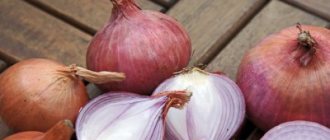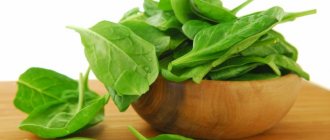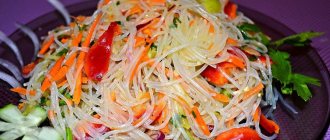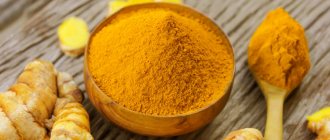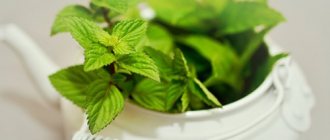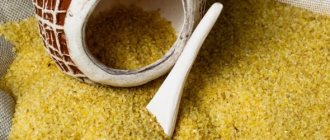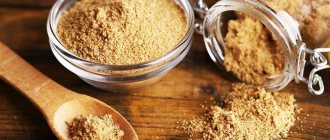It is no secret that shrimp contain a special composition of proteins, which promotes rapid absorption. They have a piquant taste and are extremely beneficial to the human body. But before introducing your baby to such a delicacy, every mother asks the question: when can children eat shrimp? Today in the article we will talk about the role of the product in the diet of children. We will discuss whether a child can eat shrimp, at what age it is advisable to offer them to children, and we will also offer delicious recipes, after trying which, the baby will ask for more.
About the benefits
According to nutritionists, shrimp are a low-calorie product and contain a whole range of amino acids important for humans. It is believed that most of the vitamins and minerals are contained in their insides. In addition to the fact that this product has a pleasant taste and piquant flavor, it is also extremely useful:
- vitamin D is an important substance, especially in the first years of the baby and is necessary as a prevention of rickets;
- the vitamin B complex improves the condition of nails, hair and skin, and also has a positive effect on the nervous system and helps increase the absorption of iron;
- chitin contained in shrimp, which resembles plant fiber in its structure, cleanses the body of toxins and helps cope with constipation;
- A product rich in vitamin A strengthens bone tissue and normalizes metabolism;
- The iodine contained in shrimp ensures the proper functioning of the thyroid gland;
- zinc helps increase immunity, improve brain activity, the condition of the visual organs and skin;
- calcium is responsible for the development of the skeletal system and teeth, and sulfur has a positive effect on the activity of the nervous system and muscle growth;
- the content of a large amount of polyunsaturated fatty acids helps to increase the tone of blood vessels, and also helps to reduce the likelihood of disturbances in the functioning of the cardiovascular system.
What are the benefits of shrimp?
These delicacies are not just tasty, but also very healthy. This product contains:
- vitamin D, which a child needs to prevent rickets;
- B vitamins, which have a good effect on the nervous system and also help improve the condition of the skin and hair;
- vitamin A, which helps strengthen bones;
- iodine, which stabilizes the functioning of the thyroid gland;
- sulfur, which ensures better muscle development;
- chitin, which helps remove toxins from the body.
In addition, shrimp are considered a source of easily digestible protein and polyunsaturated fatty acids necessary for the stable functioning of the cardiovascular system. This product contains very few calories (only 100 calories per 100 grams).
Possible harm
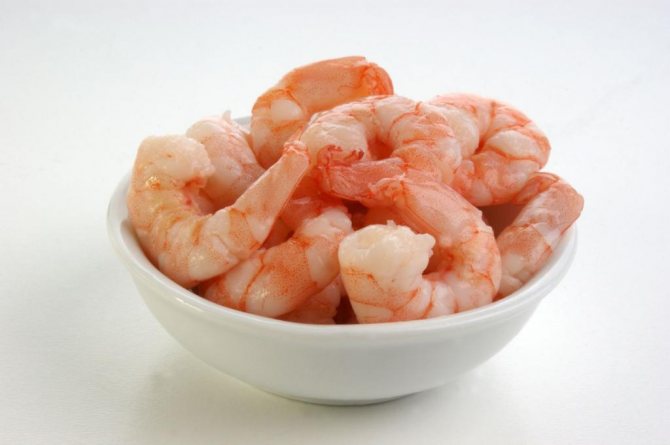
Despite the fact that such a product contains numerous beneficial substances, they can also cause serious harm to the child. One of the main disadvantages of almost all seafood is that it contains relatively high levels of mercury, a toxic metal that slows down the development of the brain of babies. In this regard, the total number of seafood dishes for children under two years old should be limited to two meals per week. It is not recommended to offer raw or undercooked shrimp to young children, as they may contain bacteria that can cause diarrhea, vomiting and fever.
Harm and contraindications
In addition to numerous beneficial qualities for children, shrimp (like many types of sea fish) have a serious disadvantage: a relatively high level of mercury, a toxic metal that slows down the development of children's brains. Therefore, the total amount of fish dishes for children under two years of age should be limited to 1–2 meals per week.
Another danger is that most of the shrimp on our shelves are farmed. They are literally stuffed with antibiotics and growth hormones.
Carefully! Raw or undercooked shrimp may contain harmful bacteria that can cause symptoms such as fever, diarrhea and vomiting. This kind of food should not be given to babies.
The classic cooking recipe involves the use of large amounts of salt and spices. This combination can harm the child more seriously than the shrimp themselves.
Allergy to shrimp
Parents may notice a food allergy in their child within minutes of eating or several hours later. Common symptoms:
- nausea,
- vomit,
- swelling of the face,
- diarrhea,
- breathing problems (obvious wheezing),
- increased weakness,
- bloating,
- abdominal cramps,
- cyanosis.
Any of the listed symptoms is a reason to immediately seek medical help.
Particular care should be taken if:
- the baby is prone to food allergies;
- already suffered from hay fever, eczema or asthma;
- or one of your blood relatives is hypersensitive to seafood.
For 40 years, the prevailing view in pediatrics was that introducing a child to food allergens such as nuts and seafood should be delayed until as late as possible. But in 2008 everything changed. A report from the American Academy of Pediatrics (AAP) has proven to the medical community that delaying the introduction of foods that commonly cause allergies into children's diets only increases the risks.
Allergy to shrimp
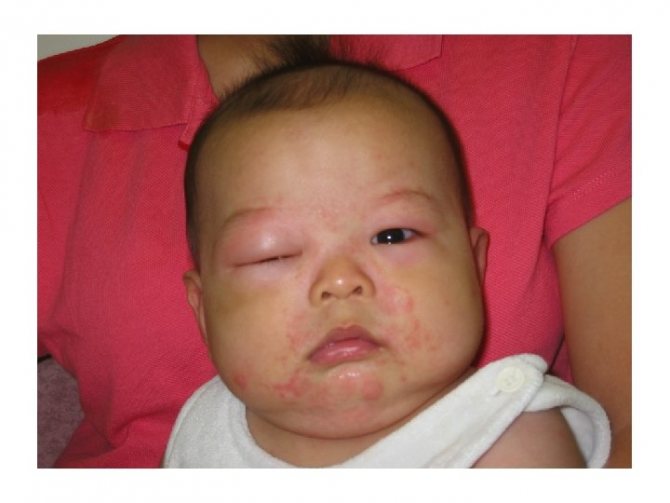
Are shrimp an allergen for children or not? Pediatricians believe that introducing a child to seafood should be postponed until a later date in order to avoid food allergies. It appears quite quickly after eating and has the following symptoms:
- difficulty breathing (severe wheezing);
- abdominal cramps;
- cyanosis;
- itching;
- vomit;
- bloating;
- nausea;
- swelling of the face and other parts of the body;
- diarrhea;
- increased weakness.
Any of the above symptoms is a reason to immediately consult your doctor.
When can shrimp be introduced into a child’s diet?
In terms of the amount of useful substances, these delicacies can easily be classified as products that can be eaten by both adults and children of different ages. However, due to a number of nuances, shrimp should be introduced into a child’s diet very carefully:
- this seafood is a very strong allergen and can cause poisoning and allergies;
- Due to the large amount of salt in the composition, seafood can cause swelling.
In addition, most often the shrimp sold in stores are imported from abroad and may not be very fresh. They often contain antibiotics and toxic substances that may simply not be absorbed by the body of a child of any age. In this regard, if you decide to introduce such delicacies into the diet of a child under five years of age, buy this product only from trusted sellers. During cooking, do not add large amounts of salt and spices.
© WallpapersCraft
You definitely shouldn’t include seafood in the diet of a toddler who is less than one year old. If you risk treating a baby under one year of age to such a delicacy, remember that in the future this may provoke a severe allergy to any seafood. Therefore, it is not worth the risk.
Most pediatricians recommend waiting until the baby is three years old. At this age, you can add seafood to your child’s diet absolutely safely.
Between the ages of one and three years, it is not recommended to try any seafood other than fish.
As a rule, if a child does not have a protein deficiency in the body, he does not need any additional proteins other than fish and meat.
However, some parents introduce seafood into their child’s diet between the ages of one and two years. Such experiments are possible if the baby does not have food allergies. Remember that introducing any new product should be done very carefully.
If your baby is prone to food allergies, you should not treat him to such delicacies until he is at least five years old. If you decide to introduce a non-specific product into the diet of a small allergy sufferer, you should consult a doctor.
In what cases should you refuse?
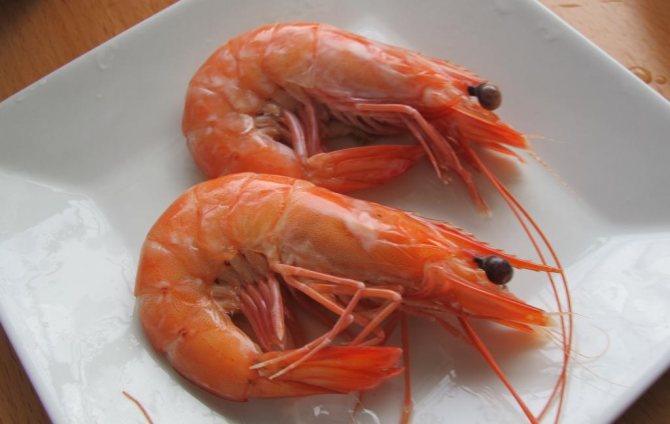
Every mother wants to surprise her baby with a new delicacy, so it is important to know whether your baby can eat shrimp. Despite the huge complex of minerals and vitamins contained in shrimp, they should not be included in the diet of a child under three years of age. The thing is that such a product is imported, so the likelihood of individual intolerance and allergies is several times greater.
Pediatricians advise excluding shrimp from your diet or taking special care in the following cases:
- if the child suffered from eczema, hay fever or asthma;
- a tendency to food allergies was discovered;
- when there is hypersensitivity to seafood in blood relatives.
It is worth considering that the increased content of iodine, which shrimp are so rich in, can cause the appearance of a thyroid goiter, as well as shortness of breath. Eating seafood in unlimited quantities can lead to kidney problems. Among other things, this can negatively affect the functioning of the baby’s central nervous system.
At what age can children be given shrimp and what are their benefits?
- They are a low-calorie product that is easily and quickly digested.
- They contain easily digestible proteins that contain all the amino acids important for growth. They also contain vitamins A, E, D, C, healthy fatty acids and microelements (iodine, calcium, iron, zinc, phosphorus and others).
- They have a pleasant taste, and adding them to a familiar dish, such as a salad, makes it more sophisticated.
- Shrimp, like other seafood, often causes food allergies.
- On the shelves of our stores there are not only shrimp caught in natural reservoirs, but also seafood from special farms, which may contain antibiotics and growth hormones.
- Preparation often involves the use of a large amount of salt, which cannot be called beneficial for the child’s body (excess salt can cause edema).
At what age can it be given?
Not a single pediatrician advises giving shrimp to children under one year of age, but most doctors also advise delaying the introduction of seafood into children’s diets after one year.
According to most pediatricians, including Dr. Komarovsky, shrimp can be included in a child’s menu when he turns 3 years old. You can try them a little earlier (from 1.5 years old) if there is a lack of protein in the baby’s diet and provided that the baby does not have a tendency to allergies, and when cooking, salt will be used in a minimal amount.
Introduction to the diet
They can be given to your child instead of fish or meat dishes. It is recommended to carry out such a replacement only once a week. In addition, a child under 5 years old should not be given more than 50 g of such seafood per day, and for children over 5 years old, one serving of such seafood can be 80-100 g.
Cooking methods
Most often for children, they are boiled for 2-5 minutes and served with a side dish. In addition, they can be an ingredient in soups, salads, savory baked goods or other dishes. You can also fry the shrimp in a little olive oil.
For a comparison of shrimp and squid in terms of protein, cholesterol and polyunsaturated omega-3 fatty acids, see the Live Healthy program.
To learn how they are grown, see the Galileo program.
All rights reserved, 14+
Copying site materials is possible only if you install an active link to our site.
https://www.o-krohe.ru/detskoe-pitanie/prikorm/krevetki/
At what age can children be given shrimp?
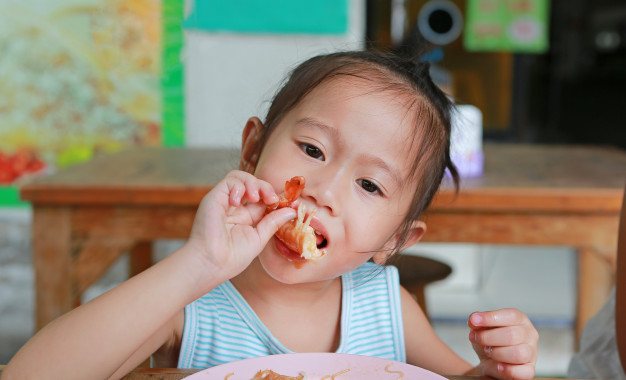
When asked whether children can eat shrimp, all pediatricians answer differently. But still, their opinion agrees on one thing: experts do not recommend offering them to children under three years of age. Starting from this age, a child can include shrimp in his diet, but not more than one gram per day. After which, it is necessary to monitor the baby’s reaction for three days and observe any deviation: difficulty breathing, cough, runny nose, liquefied stool, skin rash, especially in the cheeks, elbows, knees and other parts of the body.
Until the age of five, it is not recommended to give your baby more than 50 grams of shrimp at a time. Closer to six years, the child can increase the portion to 80 grams. Small children are allowed to eat shrimp only once a week. When preparing dishes, it is recommended to refrain from using excessive amounts of spices, and you can replace them with sour cream sauce or lemon juice. This will not only help avoid a possible negative reaction, but also slightly reduce the specific smell, which is not particularly attractive to babies.
At what age can it be given?
Not a single pediatrician advises giving shrimp to children under one year of age, but most doctors also advise delaying the introduction of seafood into children’s diets after one year.
If you give a child shrimp at the age of 1, this can become a prerequisite for the development of an allergy to seafood, and sometimes provoke a reaction to non-food allergens. In addition, a mother cannot be sure of their quality when purchasing a product in a store, so even at 2 years old, dishes with such seafood cannot be considered safe for a child.
According to most pediatricians, including Dr. Komarovsky, shrimp can be included in a child’s menu when he turns 3 years old. You can try them a little earlier (from 1.5 years old) if there is a lack of protein in the baby’s diet and provided that the baby does not have a tendency to allergies, and when cooking, salt will be used in a minimal amount.
Basic rules when getting to know shrimp
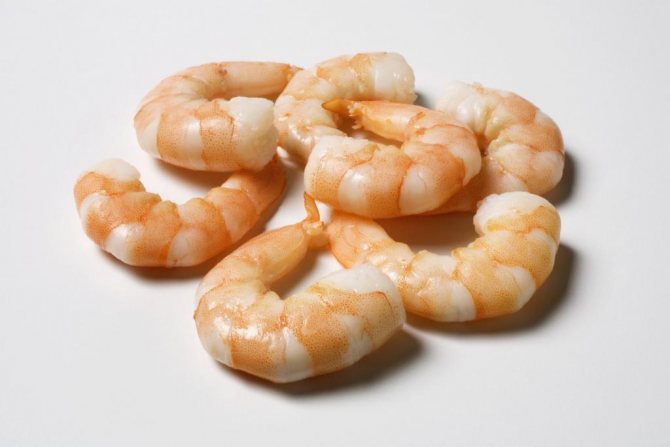
When introducing a new product into your diet, it is advisable to follow some rules.
- First, discuss this issue with your doctor, who should confirm the absence of contraindications.
- Offer your baby one boiled shrimp, take a break for three days and observe his condition during this period. To be sure of sufficient heat treatment and freshness of the product, the acquaintance should be carried out at home, and not in a catering establishment.
- If the baby does not show any negative consequences after eating shrimp, then occasionally this product can be added to the children's menu.
- Under no circumstances should you combine seafood that is not yet familiar to your child, such as mussels, shrimp, crabs, octopus, etc.
- Before serving, the product must be well heat-treated. It is advisable to cook from frozen for at least five minutes. A very common question is how long to cook boiled and frozen shrimp. The product in this form is often considered ready-made, and should be cooked for no longer than three minutes.
At what age can you include shrimp in your baby’s diet?
Most pediatricians do not advise giving shrimp to children before they reach 3 years of age, and even less should they be given to a one-year-old baby. Closer to 3 years, the baby’s body is already adapted to new food and complementary foods.
Rather, as an exception, you can give this product to babies when there is a lack of protein in their body. In this case, this product will become more of a necessity than just a delicacy. In addition, seafood helps cope with anemia and promotes growth.
You should avoid eating this delicacy if the woman did not eat seafood during pregnancy or lactation. You need to be especially careful when giving them to your baby if he lives in a region where seafood is rare.
How to properly introduce shrimp into your baby's diet
There are a number of other questions about how to introduce shrimp into your baby’s diet and do it correctly. So, a few rules for the first introduction of this seafood:
- First of all, you should consult with a pediatrician, who should find out whether there are any contraindications;
- The first time the baby should be given one or two boiled shrimps. Then it is better to wait a few days to make sure there are no allergies or side effects. In addition, it is better to give this product at home, and not, for example, in a restaurant. This way you can be sure of the freshness of the product and the correctness of its preparation;
- If everything is fine, then you can give your baby dishes from this seafood or shrimp on your own from time to time.
Shrimp soup
Ingredients:
- shrimp - 200 g;
- tomato - 3 pcs.;
- onion - 1 pc.;
- basil, garlic - to taste;
- White bread;
- olive oil.
Preparation:
- Chop the garlic, basil and onion and fry in olive oil.
- Move the workpiece into the pan and add a small amount of water.
- Cut the tomatoes into cubes and add to a common pan.
- Cook the contents for about 15 minutes.
- Cut into pieces of bread and drop them into the future soup.
- Stir occasionally until the contents thicken.
- Place the shrimp in boiling water and cook for one minute, then drain the water.
- Before serving, add peeled shrimp to the soup.
Pumpkin with shrimp
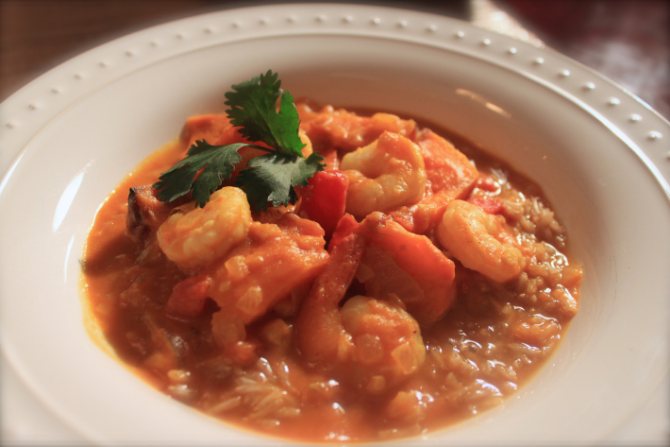
Ingredients:
- peeled shrimp - 500 g;
- pumpkin pulp - 500 g;
- onion - 1 pc.;
- processed cheese - 70 g;
- apple - 1 pc.;
- cream - 100 ml;
- vegetable oil;
- salt - to taste.
Preparation:
- The pumpkin should be cut into cubes and placed in a preheated oven at 200 degrees for 30 minutes.
- Grate cheese, apple and onion on a coarse grater.
- Fry the onion in vegetable oil, then add cheese and shrimp.
- Pour cream over the contents, add salt to taste and simmer for about five minutes.
- Add the baked pumpkin and grated apple, mix everything thoroughly and continue simmering for about three more minutes.
- You can add sour cream before serving.
Speaking about whether a child can eat shrimp, it is worth noting that there is no need to refuse them unless there are medical orders. But still, you shouldn’t let your guard down at first.
